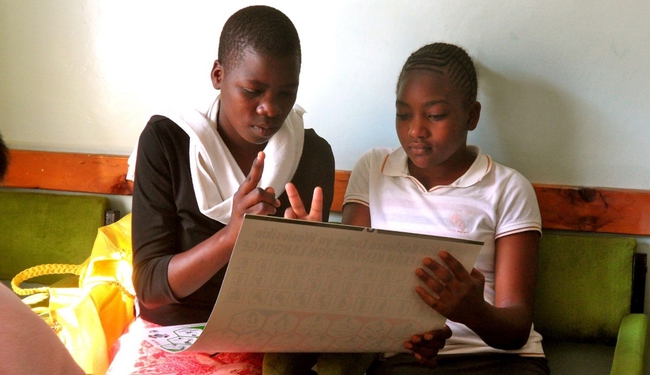Today’s global education targets aim to meet the learning needs of children, youth and adults. To truly meet the learning needs of all learners, an intentional effort to include children and youth with disabilities is needed.
Inclusive Education (IE), or the education of children with a diverse range of learning needs and inclusion of them in all aspects of school life, is critical. Children and youth with disabilities often face barriers in accessing quality education. This is an even more urgent issue for girls with disabilities. However, with adequate resources, attitudes, and systems in place, the inclusion of children and youth with disabilities can be achieved and the very same principles that allow for inclusion can also improve the quality of education for learners across the board.
In making sure all children have access to quality education there are some key concepts to consider. USAID's Disability Inclusive Education Specialist, Joshua Josa, has shared some of these points with us.
Disability is not homogenous
The disability community is not a homogenous one, therefore our approach to education shouldn’t be either. Within the disability community, there are different groups, some with distinct cultures and languages such as people who are autistic, blind, deaf, have intellectual disabilities and others who have multiple disabilities. The education system should not have a “one size fits all” approach, but rather one that is differentiated to fit the many styles of learning. Currently, the system favours learners that can hear, see and process information in the way that society views as “normal”. However, if an education system is designed to fit the style of learning for someone with a specific disability, it will likely help learners in the larger education system. For example, research has shown that all students benefit from repetition, learning at an individualized pace, visual aids and simplified language - all identified as strategies for learners with intellectual disabilities. Integrating these multimodal, differentiated learning methods as part of the larger education system will benefit all students.
The core of inclusion is respect and acceptance
At the core of inclusion is respect and acceptance. This isn't just for children with disabilities, but for everyone. Promoting inclusion of one group improves social cohesion for other minorities, such as women, marginalized ethnic and religious groups, the LGBTI community and different socioeconomic classes.
Inclusive education is about providing access
IE is about providing access to information, social settings, language and physical environments, among other things. Many people view disability from the “medical model of disability,” which views disability as the problem of the individual and looks at what changes can be made to fix or normalize the individual so they can adapt to the environment. A more inclusive model is the “social model of disability,” which looks at changing the environment to accommodate for the individual with disabilities. Practising the social model comes with its own set of advantages that everyone can benefit from. For example, curb cuts and ramps are instrumental for wheelchair users but also benefit parents who are pushing baby strollers and bikers. The same applies to subtitles - while intended for deaf and hard of hearing users, they also can increase literacy rates among the general population.
Everyone is responsible
Everyone is responsible for the implementation of inclusive education - teachers, parents, community members and students. If everyone doesn’t work together, inclusion of all children will not be realized. As we know, it takes a village! An easy first step towards achieving inclusion of people with disabilities in events, stakeholder consultations and programs is by reserving 3-5% of the overall budget for accommodations for people with disabilities such as production of materials accessible in braille and simplified language or provision of qualified sign language interpreters. Another step is to let people with disabilities know they are welcome to your events by putting text into advertisements and communications for individuals to contact for accommodations.
Increasing access for all
Increasing access for all can be achieved by using the “Twin-Tracks” approach. For education to be successfully inclusive of children with disabilities, programming should do both disability-inclusive programming and programming that focuses specifically on learners with disabilities. While the end goal is to implement programming that integrates activities inclusive of learners with disabilities, when using the social model lens of disability, it is often necessary to do specialized programming that focuses on learners with disabilities so that they can be empowered to participate with others on an equitable basis. This means including language that is inclusive of learners with disabilities (as well as gender, LGBTI, indigenous populations and linguistic minorities) throughout all aspects of a framework for education such as including early grade reading, access to education in crisis and conflict affected areas or youth workforce development and higher education.
For more information on inclusive education:
- Education for All Means All by Judy Heumann, Special Advisor for International Disability Rights, U.S. Department of State and Brent C. Elder, Ph.D
- WHO; World Bank. 2011. World report on disability. Geneva: WHO
- UNICEF. State of the world's children


